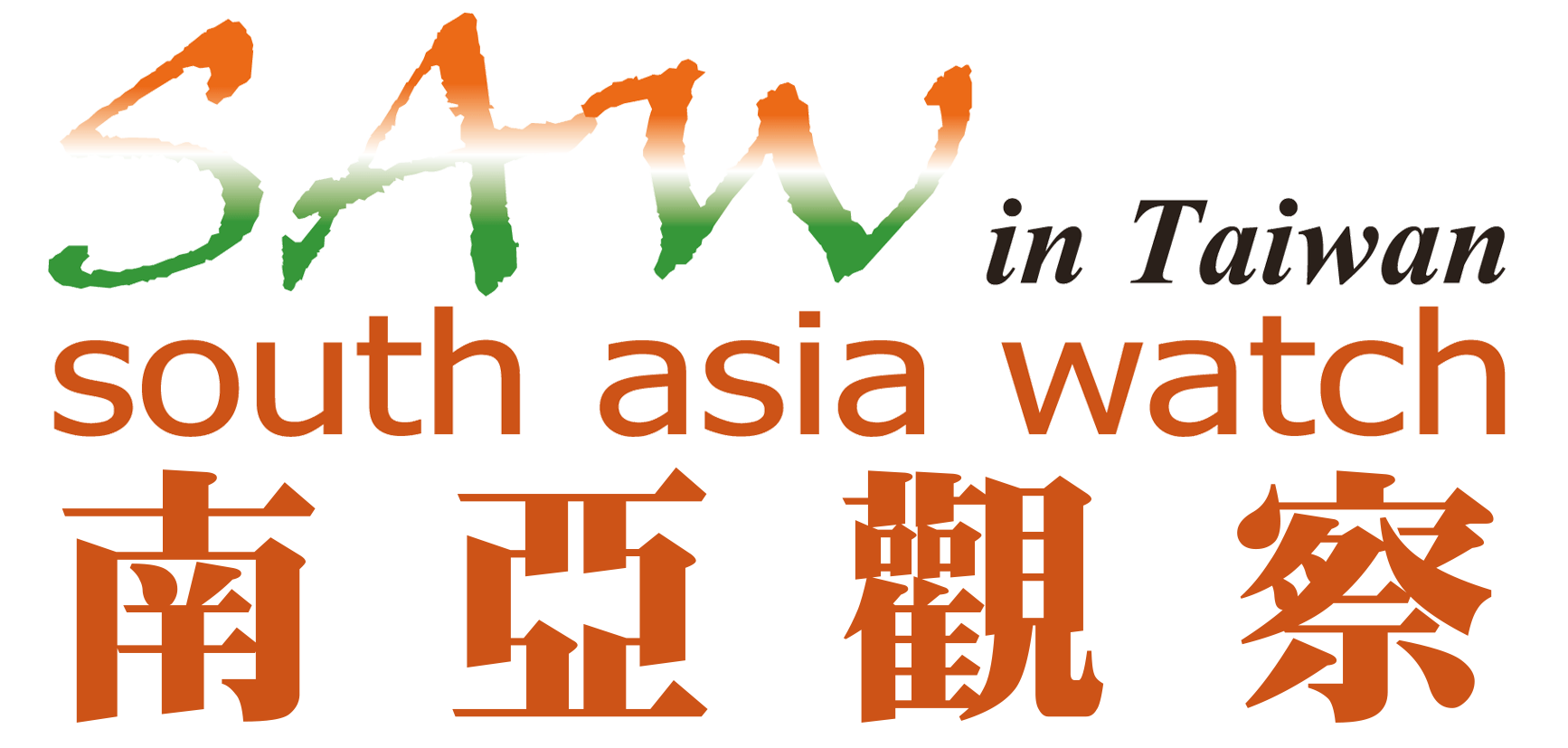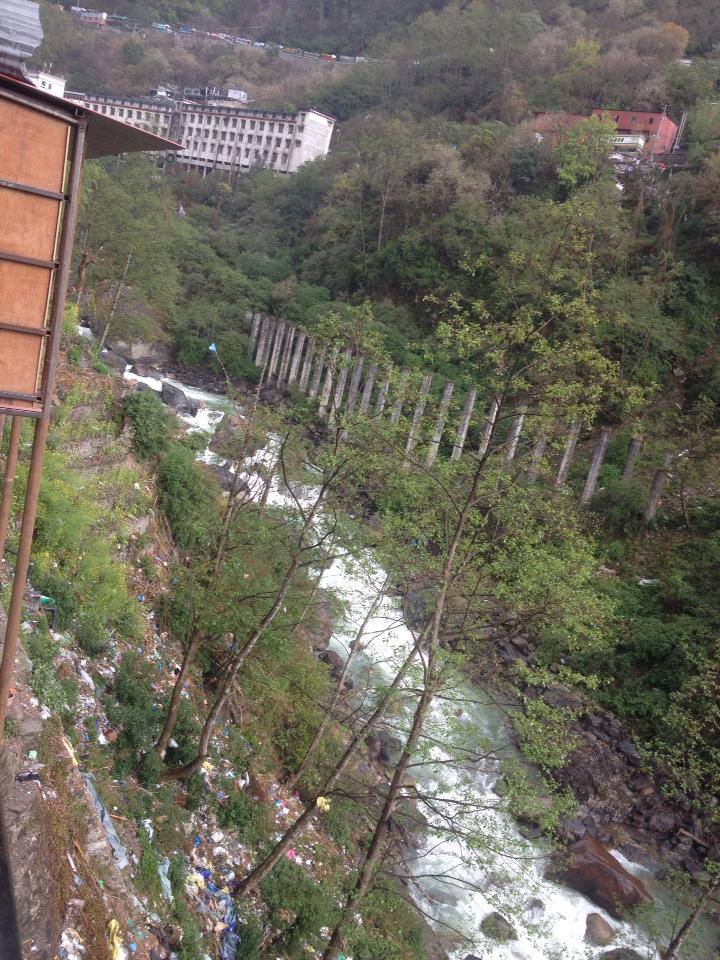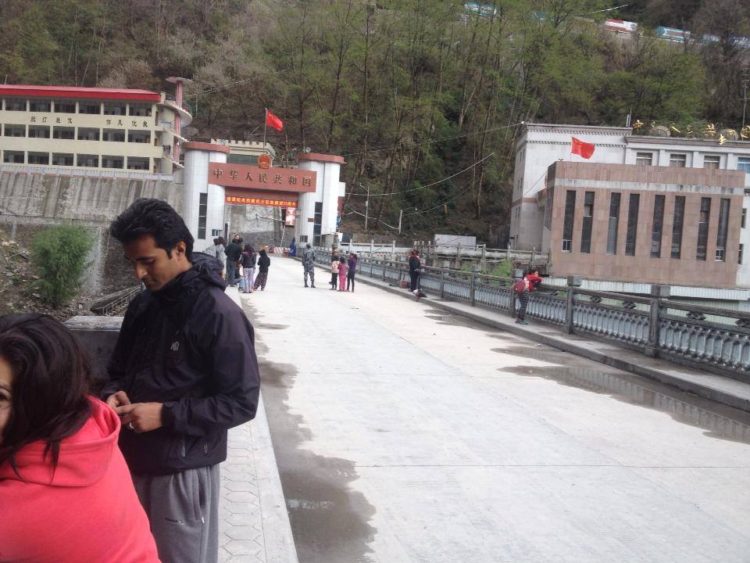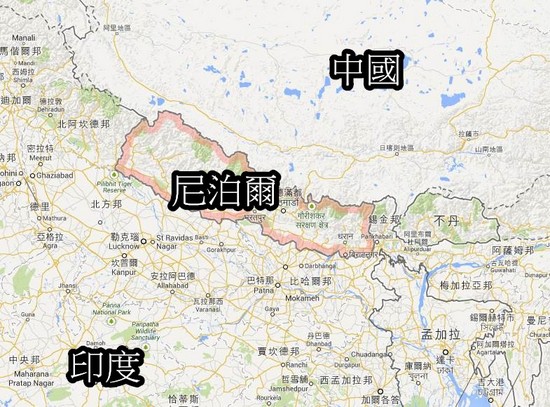Uddhab P Pyakurel, PhD./加德滿都大學教授
本文作者在2014年4月帶領研究生前往尼泊爾邊境及鄰近地區,以四起事件描繪尼泊爾與中國的邊境管理現況,包括尼泊爾政府對於本國人民權益的保障採消極態度、中國的嚴格限制與不當對待、媒體相對的冷漠。作者以親身體驗揭露許多不被媒體報導的第一手問題,從當地人的反應和其他觀點理解尼中與尼印邊境管理上的差異,最後指出尼、中邊境更開放、更友善人民的邊境管理機制的必要性。
本文作者為印度尼赫魯大學博士,現任尼泊爾加德滿都大學教授,主要研究領域為政治社會學。作者特別感謝 Uma Nepal女士以及2013-4年度發展研究碩士班同學們在田野研究過程的協助。聯絡方式:upyakurel@gmail.com。感謝黃捷歆(中興大學國際政治所碩士研究生)協助中譯,原文謹編排於本篇中文版之後。本文圖片由作者提供。
尼泊爾有十五區連接西藏自治區,使得尼泊爾與中國的邊界總長為一千四百三十九公里。但約有七百公里的邊界因地形險峻而無法進入。雙方基於善意,在距邊界的二十公里範圍內都未設置武裝人員。特別說明一下,尼泊爾通往西藏共有三十七條路。雙方政府已開放六個官方出入口,以方便人民、貨品流通與其它交流。這些邊境檢查點為Yari-Purang (Taklakot),Lomanthang (Nechung)-Jili,Rasuwa-Kyerong,Kodari-Nyalam (Khasa),Kimathanka-Riwo與 Olangchung Gola-Riwo。然而,人們亦由下列幾處通過邊境:Lipulek,Tinkar,Ural Bhanjyang,Khoptang Chaur,Musigaon,Naru,Larke Bhanjyang,Lamabagar,Namche Chhule與Lonak。
尼泊爾與中國在1956年9月30日簽訂《中國西藏自治區與尼泊爾貿易與相關事項協議》,並於2002年7月10日更新,規定欲跨境者須擁有出發國認可之有效護照與接受國認可之有效簽證。此協議並規定邊境居民須攜帶附照片的身分證,以進行邊界貿易,朝聖與探親,但僅能在另一國的邊界三十公里之內行動。另一項協議在2002年尼泊爾國王參訪中國時所簽。依據此協議,任何欲跨越尼泊爾-中國(西藏)邊境者,必須擁有真實身分證。政府應提供身分證,人民跨境時應出示官方身分證、公民證明文件,或其他政府提供之證件,否則無法跨境。這項新規則於2006年1月1日更新。允許Taplejung、Sankhuwasabha、Solukhumbu、Dolakha、Sindhupalchok、Rasuwa、Dhading、Gorkha、Manang、Mustang、Dolpa、Mugu、Humla、Bajhang與Darchula的居民不用申請簽證即可進入西藏鄰近區域。
邊境檢查點開放時間為早上八點至下午三點,並在五點時再開放半小時。這段時間內有許多人來回於尼泊爾的Liping Bazaar與中國的樟木鎮,最主要的目的為貨品交易,如毛毯,絨毛玩具,服裝,電子設備,此外還有觀光。然而,邊境也被用於人口販運與其他犯罪活動。許多人(大多數為女孩與孩子)因為性交易與勞力在邊境間流動。據信,樟木鎮市集的許多舞廳,旅館,餐廳與妓院是被准許的,許多年輕尼泊爾女性被帶至當地進行性交易或勞力工作。有趣的是,多數進入樟木鎮市集的人是尼泊爾商人、旅客以及卡車司機。甚至可以說「幾乎所有」上酒吧消費的是尼泊爾人,包括商人與Kodari-Tatopani當地人。
人們也為了尋求工作機會而跨越邊境。每日上午八點的邊境檢查站一開放,就有大批持藍色通行證的女性進入中國,在中國商店內當店員。在中國邊境工作的女性約有九十名,男性僅有五至六名。
尼泊爾移民署並未記錄尼泊爾及外國人於邊界移動。不過由於每位過境者均須向「和平與復原中心」繳納五盧比的通行證簽發費用,因此該中心有粗略的人數統計。平均而言,跨境的尼泊爾居民每日兩千一百人,但尖峰季節會突破四千人。因此,人潮的移動也有季節性,包括觀光與購買冬季羊毛產品和朝聖,多半都是印度人至聖湖Mansarovar朝聖而借道通過。
我在塔托帕尼(Tatopani)觀察到的情況
我在2014年4月有機會拜訪尼泊爾邊境及鄰近地區。當時我還帶著我指導的一組碩士研究生(主修發展研究並選修經濟外交)。雖然我十分熟悉尼、印邊界,能夠觀察並瞭解兩國邊境管理對我而言仍十分期待。下列幾起事件令我覺得此次收獲豐碩。
事件一
即使我們在下午三點左右抵達塔托帕尼,還是只能隔天才能跨越邊境。我們利用晚間來熟稔當地生活,同時計畫隔天的行程。依據計畫,我們前往移民局申請單日往返邊境證件。我們共有十九位學生參與此次教學團,包括一位來自加德滿都的尼瓦爾 (Newar) 的女同學。由於她的蒙古人種臉型與骨架,派駐於樟木鎮的尼泊爾官員建議她不要跟其他成員一起跨越邊境。他們認為具有蒙古臉型的尼泊爾人進入樟木鎮後,會很難回到尼泊爾,因為中國官員恐會認為她是試圖逃離西藏的藏人。雖然所有的成員(包括她)皆攜帶大學學生證與公民證件,但尼泊爾官員仍建議本國學生不要通關,僅讓其他成員通過。身為領隊,我試圖提出幾個問題,當一個人因為臉型而被判定為某一族群時,攜帶有效文件有何意義?在現代的21世紀,為何政府還鼓勵並合理一些完全沒道理的論點並要求其公民遵行?
政府官員最終想出一個解決辦法,請她在額頭點上又大又紅的提卡(Tika),這樣看起來就像個尼泊爾女孩。在時間壓力下,我們必須迅速找到解決方法,便答應他們的提議。其中一位尼泊爾官員並承諾會陪同我們通過邊境。這是我們如何從尼泊爾邊境進入樟木鎮的過程。
事件二
故事並沒有在提卡事件後畫下句點。我們排隊等待跨越邊境,所有人都帶著公民證與尼泊爾移民局要求的必要單日往返證件。當隊伍抵達密特里橋(Miteri Bridge),邊境開始由中國控制,其中一個學生被擋下,說他不能進入中國。中國安全部門檢查過他的身分證件,聲稱證件照片與本人不符。公民證是在個人滿十六歲時核發的證件,持有人的外貌自然會隨著年紀些微改變。學生拿出他的大學學生證,試圖解釋他就是公民證的持有人。我也加入說服行列,拿出我的學校職員證,說明我正在帶教學團,也會負責將他從中國帶回。然而,我被直接推向中國邊境那方,學生立即被遣返回尼泊爾邊境,連說話的機會都沒有。
過了橋便是一座引人注目的大門,有中國軍人守在兩側。我們再向東南方走約五十公尺,那裏座落著一棟宏偉的前衛建築 – 移民局。訪客必須提交由尼泊爾政府認可的訪客證與身分證。等待的同時,我們可再次觀察中方同樣的行為,檢查身分證的效期與真偽。此時,其中一位通過第一關中國安檢的學生,在移民局這關遭拒,因為「他的臉和身分證的照片不符合。」
我們在樟木鎮待了半天,接著進入西藏二十公里內的地區,採購了一些東西再從樟木鎮返回尼泊爾邊境檢查站。同樣的程序,我們必須出示准許文件與身分證件。中國移民局官員直接蓋出境章,我們得以穿越邊境。也許是因為文件已經在入境時檢查及確認過,因此中國移民局沒有任何騷擾。正當我們努力透過觀察來理解中、尼邊境管理時,我們注意到貼在尼泊爾邊境的牆上一份有趣的文件。尼泊爾移民局辦公室以白紙黑字的官方文件禁止包括蒙古臉型,喇嘛、雪巴人(Sherpa)、林步族(Limbu)、古隆族(Gurung)及來依族(Rai)等族群跨境。
有些成員在尼泊爾邊境閒晃的時候,中國官員阻止他們使用相機或其他攝影配備,否則將會破壞設備。當尼泊爾公民遭到無故威脅時,尼方沒有任何安全人員前來處理。我們其中一名成員意識到這點,很不理解中國官員為何可輕易踏入尼泊爾邊境,還威脅在尼泊爾拍照的遊客。中國官員當著尼泊爾官員面前跟當地人發生衝突,是很常見的事。
上述情況令我們感到驚愕,這種事我們從未聽聞。尼泊爾與中國邊界發生衝突次數頻繁,但媒體經常掩蓋負面的真相,以至於我對邊境的想像仍舊停留在美好的畫面。我試著理解媒體、尼泊爾政府官員、甚至尼泊爾當地人對這種情況的反應。然而,我們發現,連最安分的尼泊爾人在邊界也遭遇同樣的處境,但媒體始終保持沉默。尼泊爾官員不但未向中方反應並採取必要行為來維護尼泊爾利益,反而要人民維持沉默,繼續遵守不合理的規定。在這些事件中,當地人的意見幾乎不存在。接下來的事件,說明沒有媒體願意關切尼泊爾與中國邊境管理的議題。
事件三
2002年尼泊爾國王參訪中國時,在兩國部長級會議中同意導入身分證制度。尼泊爾人民若取得政府發給的身分證,便可獲得中國移民局的許可,可單日往返尼泊爾與中國。此項規定在2006年1月1日生效。
國家民主黨黨魁Pashupati Sumsher JB Rana時為計劃的首席顧問,他創立身分證發行部門。在計畫正式啟動後,Rana試圖拜訪西藏邊境區域。他按照協議內的步驟,獲得由塔托帕尼移民局長官Kamal Raj Yogi核發的第一枚身分證前往中國。但即便他攜帶著跨境時官方要求的身分證件,還是中國警方攔住,禁止進入西藏,Rana只得悻悻然返回尼泊爾。
這事件筆者是從一位尼泊爾籍邊境研究學者Buddhi Narayan Shrestha的部落格(http://bordernepal.wordpress.com/2014/03/19/experiencing-nepal-china-kodari-khasa-border-crossing/)得知,因為完全沒有媒體報導,包括尼泊爾官方媒體。Shrestha在他的部落格提出爭議點,「最有可能的是計畫委員會並未告知中方,計畫主持人要跨越邊境。」Shrestha也描述他們的團隊在跨越樟木鎮邊境時遇到的困境。他妻子與朋友的證件被中方刁難,強迫他們必須找尼泊爾官員出面。此外,當他們站在屬於尼泊爾國境的橋那方拍照時,一名中國公安一邊叫囂一邊朝他們丟擲石塊。以下第四個案例是他描述當時的經過。
事件四
我妻子和親戚持舊版的公民證件(只是一張紙),並非新制的卡片。中國移民局官員原本不准他們進入,但其中一位來自塔托帕尼移民局的官員跟著我們,保證我的妻子與親戚會從樟木鎮回來,他們倆才被放行。中國官員在移民文件上蓋入境許可的章……。其實我們在塔托帕尼移民局辦公室等待通關時,官員就提醒我們,舊證件很可能會被中國官員攔住。他們對我們很好,派了一名移民局官員、一名武裝制服警察和便裝副督察護送我們通過邊境檢查哨及計程車招呼站,還想辦法叫到計程車給我們,幫我們跟司機談到合理車資,載我們到樟木鎮後他們再返回塔托帕尼。很可能是因為中國警察看到我和尼泊爾移民局官員在聊天,得知我是邊境研究學者。謝天謝地。
歷經如此不便,他寫道:「中國移民局的結構已經很現代化,能跟上已開發國家的形式。」有人認為尼泊爾的公民身分證件並非使用國際語言,亦非機器可判讀,才使中國安檢單位有如此作為。儘管如此,這些理由並不足以讓中國不認可尼泊爾發出的公民證件,因為尼泊爾人拿公民證件搭機前往印度德里,在德里機場並沒有問題。
接著,我試圖比較印度與尼泊爾邊境和中國與尼泊爾邊境的情況。尼泊爾官員似乎習慣順從中國。中、尼邊境管理比印、尼邊境的管理相較之下來得好。暫且將複雜的情勢拋在一旁,印、尼邊境諸如騷擾與不當對待的情形,比北方的尼、中邊境來得少。南方人民若受到印度或尼泊爾官員不平等對待,可輕易地向相關單位申訴。藉由分析尼泊爾南北的邊境狀況,會發現許多問題;像是當中國安檢單方面禁止尼泊爾人民通過邊境,即使後者按照程序走,雙方的協議有何意義?或是中國安全人員在沒有證據的情況下,否認尼泊爾認證的文件。有趣的是,不僅中國這麼做,連尼泊爾也未很明確地保護自己的國民。即使尼泊爾公民提出原始證件,政府本身在文書處理過程中依然不鼓勵人民跨越邊境。在這種情況下,誰還會在乎尼泊爾在國際邊界的利益呢?如果類似或較輕微的尼、印邊境出現問題時,媒體絕不會輕易放過,甚至以社論方式加以評論。出版社論並沒有錯。事實上,媒體刊出社論有助於糾正並改善情況。本文試圖從當地與其他觀點來理解兩國邊境管理上的差異。
我有幾個問題:那些因素在南北邊境造成如此差異?是因為尼泊爾一方面視印度為親密的好兄弟,另一方面又因「尼泊爾國家主義」而必須反印度的兩難情結?或是因為缺乏語言、及行為表現的理解,令尼泊爾與中國難以互動?抑或有其他因素造就尼泊爾必須面對印度時表現強硬、但面對其他邊境時(包含中國)保持緘默?這些問題可做為將來研究的基礎。
作者試圖比較其他如非法貿易、商品走私等邊境狀況。在尼泊爾和印度,一般都認為開放邊境會使這些活動更猖獗。但根據我們的觀察,這些活動到處都有,不管是開放或封閉的邊境皆然。在中、尼邊境,我們看到數以百計的人民靠走私維生。尼泊爾米,尼泊爾瓦斯桶,印度彩繪商品等,是尼泊爾走私到中國的主要產品,光明正大地在中國安檢人員眼下入境。中國安檢擋下旅者,質疑文件的效期與真偽,但對從商品走私到中國的挑夫視而不見。有趣的是,任何人都看得到走私者帶著商品跨越大橋後,坐在移民局門口把商品藏在身上後再走過移民局。所有的事情都發生在安檢人員眼前。除了當地的女人與小孩在白天被利用為走私商品的工具之外,夜間的走私則透過其他路徑持續進行。這些證據能幫我們進一步為開放式、更友善人民的邊境管理機制辯護。
Some observations about border management between Nepal-China
Uddhab P Pyakurel, PhD.
Background
Nepal’s 15 districts border with Tibet Autonomous Region (TAR); whereas the total length of boundary between Nepal and China is 1,439 km. But around 700 km of it are inaccessible owing to harsh terrains. It is a measure of the goodwill the two sides share that none has stationed armed personnel within 20 km of the border. For the record, there are 37 mountain passes between Nepal and TAR of China. The two governments have opened six formal entry and exit points for the movement of people, goods and merchandise. These border crossing points are Yari-Purang (Taklakot), Lomanthang (Nechung)-Jili, Rasuwa-Kyerong, Kodari-Nyalam (Khasa), Kimathanka-Riwo and Olangchung Gola-Riwo. However, people also cross the border from Lipulek, Tinkar, Ural Bhanjyang, Khoptang Chaur, Musigaon, Naru, Larke Bhanjyang, Lamabagar, Namche Chhule and Lonak into the TAR.
Nepal and China signed an agreement on Sept. 30, 1956 that is called ‘Agreement on Trade and other Related Matters between the TAR of China and Nepal’. It was renewed last time on July 10, 2002 which says that those who wish to travel to the other country shall hold valid passports issued by the sending country and visa issued by the receiving country. It has provisioned exit-entry passes with photo affixed ID Cards for inhabitants of the border districts for the purpose of border trade, pilgrimage and visiting relatives and friends. But they are not allowed to go beyond the limit of 30 km from the borderline towards the interior of the other country. Another agreement was signed and ID card system was introduced at the ministerial level meeting of the two countries after the King’s visit to China in 2002. According to the agreement, any inhabitant of the bordering district who wants to cross the Nepal-China (Tibet) and vice versa have to produce an authentic Identity Card compulsorily and those failing to comply with the rule will not be allowed to cross the border. The government officer, assigned by the Chief District Officer (CDO), provides ID cards to those who show the official identity card or citizenship certificate or other cards provided by the government. This new rule which was enforced from 1 January 2006 allow the residents of Taplejung, Sankhuwasabha, Solukhumbu, Dolakha, Sindhupalchok, Rasuwa, Dhading, Gorkha, Manang, Mustang, Dolpa, Mugu, Humla, Bajhang and Darchula to visiting the nearby areas of Tibet without producing visas. Besides, inhabitants of Kathmandu Valley are also visiting Khasa (Zhangmu), the commercial town of China border with the ID card.
The border opens at 8.00 am till 3.00 pm and then again it is opened for half an hour at 5.00 pm in the evening. Between these hours, many people move around the Liping bazaar of Nepal and Zhang Mu Port, China. They move around for various reasons and each seems to be engaged in their work. The main purposes for the movement of people are for trade[1] of many goods like blankets, soft toys, garments, electric goods and for touristic purpose. However, the border is being used for human trafficking and other criminal activities. Many people, mostly girls and children, are trafficked for the purpose of sexual and labor exploitation. It is said that many dance bars, hotels, restaurants, brothels (Jhuppo) are available in Khasa bazaar and many Nepali girls are taken there for sexual and labor exploitation[2]. Interestingly, the bulk of the
clients visiting the bars in Khasa Bazar are Nepali businessmen, travelers and truckers. “Almost all” the clients visiting these bars are Nepalis) including
businessmen and locals of Kodari-Tatopani area[3].
Moreover, people cross the border for employment as well. As soon as the border gets opened at 8 am, one can easily notice that large number of female with blue pass enters into to the China border, and these ladies are working as sales girls in the Chinese shops. There are about 90 female workers working across the China border whereas only 5-6 male workers are there to perform the same job.
Immigration office of Nepal does not have record of Nepalese and other foreigners’ movement over the border. However, the Peace and Rehabilitation Centre which collected five rupees from each individual to issue pass for those who crosses the border can give an estimation of the number of people. On an average the total pass of Nepali citizen is 2100 but it is predicted to get more than 4000 per day in peak season. So, the movement also has a seasonal factor which includes tourism and shopping of woolen products in winter days and for pilgrimage. Mostly, Indians travel through the route as pilgrims for visiting Mansarovar.
What I have observed in Tatopani (Liping bazaar of Nepal and Zhang Mu Port, China) of Nepal-China border
I got an opportunity to visit Nepal’s border with its neighbours in April 2014. It was the time when I had to lead a team of my Master’s students studying Development Studies and opting Economic Diplomacy as one of the optional subjects. Though I was quite familiar about Nepal-India border it was exciting momentum for me to observe and understand Nepal-China border management. As far as new knowledge is concerned, the study visit became awesome for me due to the following cases:
Case One: Though the team reached Tatopani on the same day at around 3.00pm, we had no option except to wait for next day to cross the border. We tried to use the evening time to familiarize with the locality, and accordingly planned for the next day trip. According to the plan, we left hotel for the immigration office for one-day pass to cross the border. As mentioned earlier there were 19 students in the educational tour, and out of all a Newar (Maharjan) girl from Kathmandu was also in the team. Since she had Mongolian facial structure, she was suggested by Nepalese officers deployed in Khasa border point not to go with other team members to cross the border. Their argument was that it is very difficult to return back to Nepal if any Mongolian faced Nepalese entered Khasa because the Chinese authorities often perceive that any person with such facial look is a Tibetan trying to escape from Tibet. All the team members including her were carrying their university identity cards and citizenship certificates cards. Even then, Nepali government officers suggest a Nepali student not to assert with her identity but to let her team go without her. Being a team leader, I tried to pose a couple of questions to myself asking i.e. what is the meaning of carrying a valid document if somebody is being identified as per his or her facial structure, and how can a government body of the 21st century rationalize and encourage such an irrational argument and suggests its citizen to behave accordingly?
Eventually, the officers came with a solution, and that was she had to put a big and redTika on her forehead so that she looks like a girl from Nepal. Since we had to find a prompt way out due to time limitation, we followed their suggestion. Also one of the Nepalese officials agreed to provide his company to facilitate us to cross the border. That is how our team was able to move from Nepal’s border point towards Khasa.
Case Two: The story didn’t end up with Tika. We all were in queue to cross the border, and everyone had carried their original citizenships and one day pass issued by Nepal immigration as these were the essential documents to cross the border. Once our team reached the middle of Miteri Bridge from where Chinese control starts, another student from our team was stopped by the Chinese solder saying that he cannot move ahead towards China. The Chinese security saw the citizenship and didn’t let him enter the border. The solder’s argument was that the photograph in the citizenship was not matching with his face. Citizenship certificate is a document which is issued once someone crosses the eligibility age that is 16 years. Then, it is obvious that the face will be little changed with the age. The student showed his college identity card and tried to explain to prove that he was the same person as in the citizenship card. I also tried to convince the solder showing my university identity and saying that I am leading the team and I will be responsible for bringing him back from China. However, I was pushed towards China side whereas he was not allowed to even speak and was forced immediately to return towards Nepal side.
Once crossed the bridge, there is an attractive gate where one sees Chinese military standing in both the corners. Then visitors have to move some 50 meters towards South-eastern part. There is a huge immigration building with very advanced technologies. That is the place where a visitor has to submit the visitor’s pass issued by Nepal government with their identity cards. While doing so, we could again observe the repeated behavior of Chinese authority to question about the validity and originality of citizenship cards people carry out with them. One member of our team who was allowed by the first Chinese security personnel after verifying his citizenship, was denied immigration saying that “his face and the photo in the citizenship card does not match”.
We spent half-a-day in Khasa went up to some 20 Kilometer inside TAR and returned from Khasa town to the Nepal border crossing point with some shopping. The same procedure was followed to show the permit paper and citizenship certificate. Chinese immigration official stamped the Exit Mark on the immigration paper and then we crossed the borderline. This time there was no harassment by the Chinese immigration authority; may be because the document has been already checked and verified while entering. Once we tried to understand the border management system of Nepal-China by observation, we encountered a very interesting document posted on walls in the Nepali side of the border. The document issued by Nepal Immigration office had clearly notified in a written form about the restriction to cross the border for those with Mongolian face particularly, Lama, Sherpa, Limbu, Gurung, Rai, etc.
While some of our team members were roaming in the Nepali side of bordering bridge, they were threatened by Chinese officials suggesting not to use their cameras or else, they would destroy it. When a citizen of Nepal was being threatened without a reason, no security personnel from Nepal counter reacted to it. Having observed the situation, one of our team members commented questioning whether the Chinese security officials deployed Nepali government officers. Such a reaction came due to the fact that those Chinese officers easily and frequently visit Nepali side of the border to threaten those visitors who try to take photos from Nepalese side. Also, they are generally caught fighting with locals in front of Nepali officials.
Once we observe the above-mentioned scenes, firstly it came as a big surprise for us. It was because we never hear about such bitter stories covered by media even if it is very much there in the Nepal-China border. Since we could listen and read a lot about harassment in the Nepal-India border, I was expecting only the rosy picture of the border. Then I tried to understand the reaction of media, government officials of Nepal and even the local Nepalese about the situation. However, what we found was that the media has still remained silent, even when decent Nepalese are facing the difficulty in Kodari-Khasa border point. Instead of reacting with their counterparts, and doing needful work save the interest of Nepalese citizens, Nepalese officers rather suggests Nepalese to remain silent and with their do(es) and don’t(s). To all these cases, there was very less or no local reaction. The following case reminds that no media give attention on the issue of Nepal-China border management.
Case Three: Nepal and China agreed to introduce the ID card system at the ministerial level meeting of the two countries after the King’s visit to China in 2002. According to which the government officer of Nepal, assigned by the CDO, provides ID cards to those who show the official identity card or citizenship certificate or other cards provided by the government, and s(he) will be allowed one day entry permit by the Chinese Immigration office. This new rule was enforced from 1 January 2006. Card distribution function was inaugurated by the then Rastriya Prajatantra Party President Pashupati Sumsher JB Rana, as a chief guest of the programme. After the inauguration programme, Rana tried to visit Tibet’s border area. Rana followed the agreed procedure, collected ID Card Number-1 issued and signed by Chief of the Tatopani Immigration Officer Kamal Raj Yogi and went towards China. But he was stopped by the Chinese police without any consideration for his ID card. Rana was prevented from entering Tibet although he had been issued the necessary ID card for getting an entry permit to Tibet. Infuriated Rana turned back when he was not given an entry permit by the Chinese police even after showing his card.
This is the incident, which was not reported by any media, including Nepal’s national media. The author of this paper also knew it while reading a blog by a Nepali ‘border researcher’ Buddhi Narayan Shrestha[4]. His blog argues saying that “most probably the program organizing committee had not informed to the Chinese immigration office that the chief guest of the program is visiting the other side of the border”. In fact, Shrestha is the one who also narrated the difficulty his team faced while crossing Khasa border. The citizenship his wife and friend carried was questioned by the Chinese police forcing them to seek help of Nepalese officers to convince Chinese counterparts, and a Chinese police threw a piece of stone at them and cried while they were taking some photographs on the bridge on the Nepali side. He writes:
Case Four: My wife and one of my relatives had the old type of citizenship certificates (on plain Nepali paper), not as the card format. Chinese immigration officer was about to stop them. But one official from Tatopani immigration office was with us. The Nepali official took guarantee for my wife and relative that they will come back from Khasa, and it was permitted to cross the border. The Chinese official stamped the Entry Mark on the immigration paper…while we were making immigration permit at Tatopani office, the official had already told me that the Chinese official may not permit with this old type of citizenship certificate. So they were kind to us and joined one of the immigration officials and one armed police with uniform and one Sub-Inspector in plain cloth. They accompanied and escorted us up to the border crossing point and taxi stand. They managed one taxicab for us with a reasonable fare to drive to Khasa town and they returned to Tatopani. It was possible that Armed Police DSP Arjun Thapa recognized me as a Border Researcher, as I was talking with the security personnel at Nepal immigration office. Thanks god.
But even after such harassment, he writes saying that “infrastructure of the immigration office on the Chinese side was up-to-date as it was like any of the developed countries”. One argument may be that citizenship issued by Nepal is neither in international language nor machine readable, and the Chinese security faces challenge due to such problems. Nevertheless, it does not provide pretext for Chinese as Nepalese are using the same citizenship as travel document while using flights to and from Delhi, India, and there is no such incidents faced by Nepalese while using the same documents even in Delhi airport.
Then, I tried to compare the situation between Nepal-India border and Nepal-China border. It seemed that these Nepalese officials have developed the habit of obeying the Chinese to do or not to do. Nepal-China border management is relatively better managed than Nepal-India border. However, in Nepal-India border, despite the chaotic circumstances, the issues like harassments and maltreatment were less than in the north. People to the South can easily argue with the concerned authorities if they feel that they are being maltreated by the Indian or Nepali officials.
Analyzing the scenario at both the border point of Nepal, a number of questions arises as an serious issue. i. e. what is the relevance of the bilateral agreement if Chinese security unilaterally stops somebody to cross the border even if she/she follows the due procedure? How could a Chinese security, without any proof, term an authentic and original document issued in Nepal as invalid document and behave accordingly? Interestingly, not just from the Chinese side, the Nepalese themselves discourage its people rather than being assertive and protective towards their nationals. Though any Nepali citizen provides an original document, Nepali state itself discourages its citizen, in the written form, to cross the border. In that situation, who cares about the interest of a Nepali in the international border? The same media does not hesitate to write even the editorial[5] if there is similar or even a less serious case of mismanagement or harassment case in Nepal-India border. Publishing editorial was not wrong, In fact, it will help correct and improve the situation if media covers such issues. Here, I am just trying to understand the difference in perceiving two border management systems by the locals and others.
A couple of questions are in my mind i.e. what are different factors that might be playing a role for causing such differences in the two borders. Is it due to our (Nepalese) dilemma to see India as very close brother on the one hand, and a strong sense of ‘Nepali nationalism’ that has to be anti-Indian on the other? Or is it due to lack of understanding and command in language, gesture and behaviors which made difficult for Nepalese and Chinese to interact with each other? Or is there something else which makes Nepalese to be assertive while dealing with Indian and to keep quiet while dealing with others including Chinese? These questions can be the basis for further research.
The researcher also tried to compare other border related phenomenon i.e. illegal trade, smuggling of goods etc. The general perception, especially in Nepal and India, is that open border is instrumental in encouraging these kinds of activities. But our observation helps us to argue that such activities are everywhere, whether it is open border or closed border. In Nepal China border, we have observed that there are hundreds of people who are working as carrier to smuggle goods. Nepali rice, Nepali gas cylinders, Indian mehendi items etc. are the most smuggled items from Nepal to China, and it is being smuggled openly in front of Chinese security. The Chinese security which stops travelers and questions the validity and authenticity of the original documents issued by the government does nothing to those carriers who smuggle goods from Nepal to China. Interestingly, one could observe the fact that the smugglers cross the bridge with the goods, sit in the front side of the immigration building in order to hide the goods inside their body, and cross the immigration. All things happen in front of security. Though women and children of the local areas were mobilised to smuggle goods in the daytime, goods are smuggled in the night as well by using some alternative routes. These evidences help me further to argue for the open border mechanism saying that it is more people friendly than the so-called closed and regulated border.
[1] Both legal and illegal trade is being carried out regularly and the people involved in such activities are people from different background. Talking to the truck drivers, everyone was male. The traders were both male and female who bought goods so that they could sell it back home. However, in case of illegal trade, the large numbers of people involved were female and children; there were hundreds of women involved in illegal trade in a single day. Similarly, the number of children involved in such activities was also surprisingly high. Also there were large numbers of Nepali workers in the markets of Zhang Mu Port working as assistants to the Chinese Shopkeepers in comparison to the males.
[2] As per one of the volunteer of Maiti Nepal, sometimes even 15-16 girls are rescued from there in a day. The broker usually takes away the citizenships and the passes of those girls due to which they become unable to run away and come back to Nepal. But in some cases, the girls are able to contact the border securities, they are jointly rescued by the police and Maiti Nepal.
[3] For details, see “KHASA HAS ONE MORE ATTRACTION: SEX”. The Kathmandu Post, March 1, 2000.
[4]For details, see Experiencing Nepal-China border crossing at Kodari-Khasa, available at http://bordernepal.wordpress.com/2014/03/19/experiencing-nepal-china-kodari-khasa-border-crossing/, accessed by the author on September 29, 2014.
[5] See, Editorial, Nagarik Daily, September 25, 2014.



